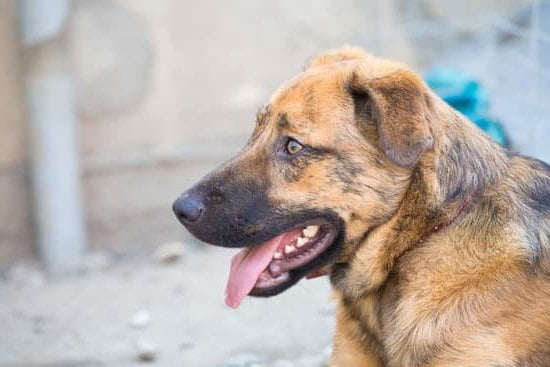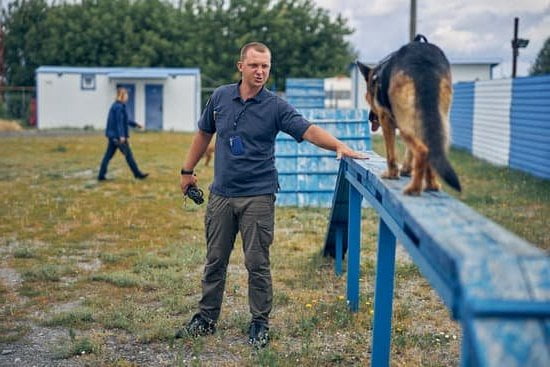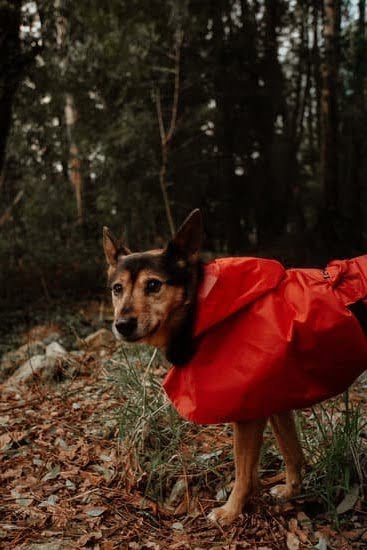Play biting is a common behavior in dogs, especially during their early stages of development. While it may seem harmless and cute at first, play biting can become a frustrating and even dangerous habit if not properly addressed. This article will guide you on how to train your dog to stop play biting and establish appropriate boundaries for playtime.
Understanding the root causes of play biting is crucial in developing an effective training plan. Dogs use their mouths as their primary means of exploration and communication, and this behavior is often reinforced during puppyhood through social interactions with littermates. However, as dogs grow older, their play bites can become harder and more forceful, causing unwarranted pain or injury.
Proper training is essential when it comes to addressing play biting in dogs. Consistency, patience, and positive reinforcement methods are key elements that can help modify this behavior. With the right techniques and guidance, you can teach your furry companion to engage in appropriate play without resorting to painful or harmful biting.
In the next sections of this article, we will explore the different aspects related to training a dog to stop play biting. We will discuss common mistakes to avoid during training, step-by-step guides on establishing boundaries for play biting, effective positive reinforcement strategies, the role of socialization in curbing this behavior, troubleshooting difficulties that may arise along the way, and ultimately celebrating success achieved through dedicated training efforts.
So let’s delve into understanding and addressing play biting behavior in dogs to ensure a bite-free future with your four-legged friend.
The Importance of Proper Training When it Comes to Play Biting
Proper training is crucial when it comes to addressing play biting behavior in dogs. This section will explore why training is important and how it can help prevent and resolve play biting issues.
The Dangers of Untrained Play Biting
Play biting may seem harmless, but it can escalate into a serious problem if not addressed. When dogs are allowed to bite during play, even in a playful manner, it reinforces the idea that biting is acceptable behavior.
This can lead to more aggressive behavior in the future, as well as potential harm to humans or other animals. Therefore, it is essential for dog owners to understand the importance of proper training to prevent any potential dangers associated with play biting.
Establishing Boundaries through Training
Training provides an opportunity to establish clear boundaries for your dog regarding play biting. By teaching your dog what is acceptable and what is not through consistent and positive reinforcement techniques, you can effectively communicate your expectations. This includes teaching your dog the appropriate circumstances when they are allowed to bite during play and when they should refrain from doing so.
One method that can be used is interrupting the biting behavior by giving a firm “no” command or redirecting their attention to a chew toy or treat. By consistently reinforcing these boundaries, your dog will begin to understand that there are limits to their play behaviors.
Building Trust and Strengthening the Bond
Proper training not only helps address play biting but also plays a significant role in building trust between you and your dog. Dogs thrive on structure and guidance from their owners, and providing them with consistent training teaches them that you are their leader. This builds trust and strengthens the bond between you, which can translate into improved obedience and overall behavior.
Furthermore, through positive reinforcement methods such as rewards, praise, and treats, you can create a positive association for your dog with desirable behaviors. When they exhibit non-biting behavior during play, reward them immediately to reinforce the desired response. This will motivate your dog to continue displaying the desired behavior and reduce the likelihood of play biting.
Identifying the Root Causes of Play Biting in Dogs
When it comes to addressing play biting behavior in dogs, it is crucial to first identify the root causes behind this behavior. Understanding why your dog engages in play biting will allow you to tailor your training methods and techniques accordingly, leading to more effective results. Here are some common root causes of play biting in dogs:
Lack of Bite Inhibition
One of the main reasons why dogs engage in play biting is due to a lack of bite inhibition. Bite inhibition refers to a dog’s ability to control the force of their bites and not cause harm or injury during play.
Puppies learn bite inhibition during their early socialization period with their littermates and mother. However, if a puppy did not have this opportunity or was separated from their litter too soon, they may not have developed proper bite inhibition skills.
Teething
Another common cause of play biting in dogs, particularly for puppies, is teething. Dogs go through a teething phase where their baby teeth fall out and are replaced by adult teeth. During this time, puppies may experience discomfort and pain in their gums, leading them to seek relief through biting and chewing on objects or people.
Excitement
Play biting can also be a result of overexcitement during playtime. Some dogs get so caught up in the excitement that they forget their boundaries and start nipping or biting at hands or clothing. This behavior is especially common among high-energy breeds or young dogs who haven’t learned how to control their impulses yet.
By identifying the root causes of play biting, you can better understand why your dog engages in this behavior and adjust your training approach accordingly. Whether it’s teaching bite inhibition, addressing teething issues, or managing excitement levels during playtime, effectively targeting the root cause will help you successfully train your dog to stop play biting.
Essential Techniques and Training Methods to Stop Play Biting
To effectively train a dog to stop play biting, there are several essential techniques and training methods that can be used. These techniques help redirect the dog’s behavior and teach them appropriate ways to interact and play with humans and other animals.
One of the most effective techniques is the use of positive reinforcement. This involves rewarding the dog for desired behaviors, such as not biting during play. When the dog engages in appropriate play behavior, they can be rewarded with treats, praise, or playtime with a favorite toy. This reinforces the idea that good behavior is beneficial and encourages them to continue practicing it.
Another technique is providing alternative behaviors for the dog to engage in instead of play biting. For example, when the dog starts to nip or bite during play, immediately redirect their attention to a chew toy or a game of fetch. This teaches them that biting humans or other animals is not acceptable, but chewing on appropriate toys and engaging in interactive games is encouraged.
Consistency is key when using these techniques. It is important to consistently reinforce good behavior and redirect inappropriate behavior each time it occurs. This helps the dog understand what is expected of them and reduces confusion.
| Technique | Description |
|---|---|
| Positive Reinforcement | Rewarding desired behaviors with treats, praise, or playtime |
| Redirection | Providing alternative behaviors for the dog during play |
| Consistency | Maintaining consistent reinforcement of good behavior |
By implementing these essential techniques and training methods, dog owners can effectively teach their dogs to stop play biting and promote appropriate play behavior.
Step-by-Step Guide
To effectively train a dog to stop play biting, it’s essential to establish clear boundaries and set consistent rules. This step-by-step guide will provide you with the necessary techniques and strategies to establish these boundaries and ensure that your dog understands what is acceptable behavior during playtime.
- Start with basic obedience training: Before addressing play biting specifically, it’s important to have a foundation of basic obedience training in place. Teach your dog commands such as “sit,” “stay,” and “leave it” so that they understand you are their leader and respect your authority.
- Use redirection techniques: When your dog starts play biting, redirect their attention onto an appropriate toy or chew item. This helps them understand that biting humans is not acceptable while also providing an outlet for their chewing instincts.
- Set clear verbal cues: Teach your dog specific cues to signal the end of play or when they are being too rough. Consistently use phrases like “enough” or “gentle” in a firm but calm tone to communicate clearly with your dog.
- Practice time-outs: If the play biting continues despite redirection and verbal cues, implement time-outs as a consequence for inappropriate behavior. Remove yourself from the situation by leaving the room or using a barrier to separate you from your dog for a brief period (e.g., 30 seconds to 1 minute). This teaches them that playtime stops when they bite too hard.
- Encourage calm behavior: Reward calm behavior during play sessions by praising and rewarding your dog whenever they interact gently without resorting to biting. Use treats, verbal praise, and petting as positive reinforcement for appropriate actions.
- Be consistent: Consistency is key when setting boundaries and enforcing rules for play biting. Make sure everyone in the household follows the same guidelines and uses the same verbal cues with your dog. Inconsistency can confuse dogs, making it more difficult for them to understand what is expected of them.
By following this step-by-step guide, you can effectively establish boundaries and set rules for play biting. Remember that training takes time and patience, so be consistent in your efforts and celebrate every small victory along the way. With dedication and positive reinforcement, you can ensure a bite-free future with your four-legged friend.
Effective Positive Reinforcement Strategies for Training Dogs to Stop Play Biting
Play biting is a natural behavior for dogs, especially puppies, as it is a way for them to explore and interact with their environment. However, it is important to teach dogs appropriate ways to express themselves during playtime. Positive reinforcement training techniques have been proven effective in modifying play biting behavior in dogs.
Positive reinforcement involves rewarding desired behavior to encourage its repetition. When it comes to play biting, the goal is to reward your dog for playing without biting or mouthing too hard. Instead of scolding or punishing your dog when they bite during play, focus on redirecting their behavior and rewarding them for appropriate play.
One effective positive reinforcement strategy is the use of rewards such as treats or praise. When your dog engages in gentle, appropriate play without biting, immediately reward them with a treat and plenty of verbal praise to reinforce the desired behavior. This will help your dog associate good behavior with positive outcomes and will motivate them to continue playing gently.
Another technique is using clicker training, which involves using a clicker sound (or any other distinct sound) followed by a treat or reward. As soon as your dog engages in gentle play without biting, make the clicker sound and immediately give them a treat. Over time, your dog will learn that the clicker sound signifies good behavior and will associate it with a reward.
Consistency is key when using positive reinforcement strategies. Make sure that everyone who interacts with your dog understands the rules of playtime and follows the same guidelines for reinforcing positive behavior. This will prevent confusion for your dog and ensure that they receive consistent rewards for appropriate play.
By implementing these effective positive reinforcement strategies consistently and patiently, you can train your dog to stop play biting and develop healthier habits during playtime. Remember to always be patient with your furry friend as they are learning new behaviors, and celebrate their successes along the way.
| Positive Reinforcement Strategies | Description |
|---|---|
| Rewards and praise | Immediately reward your dog with treats and verbal praise when they engage in gentle, appropriate play without biting. |
| Clicker training | Use a distinct sound, like a clicker, followed by a treat to reinforce good behavior during playtime. |
| Consistency | Ensure that everyone follows the same guidelines for reinforcing positive behavior during playtime to prevent confusion for your dog. |
The Role of Consistency and Patience in Achieving Behavior Change
Consistency and patience are key factors in achieving behavior change when training a dog to stop play biting. Dogs thrive on routine and structure, so it is essential to be consistent in your training methods and expectations. By consistently reinforcing desired behaviors and avoiding reinforcement of undesirable behaviors, you can effectively teach your dog to stop play biting.
One way to ensure consistency is by establishing clear rules and boundaries for play biting. Consistently communicating these rules to your dog will help them understand what is expected of them during playtime. For example, if your dog begins to play bite, immediately redirect their attention to an appropriate toy or treat to show them the correct behavior.
Patience is also crucial when working with a dog that has a habit of play biting. Behavior change takes time, and it is important not to get frustrated or lose hope. Every dog learns at their own pace, so it is essential to remain patient throughout the training process.
In addition to consistency and patience, positive reinforcement plays a significant role in achieving behavior change. Rewarding your dog with treats, praise, or affection when they exhibit appropriate behavior instead of play biting can reinforce the desired behavior. This helps your dog understand that good things happen when they do not engage in play biting.
By staying consistent with your training methods, having patience throughout the process, and utilizing positive reinforcement techniques, you can achieve behavior change in your dog’s play biting habits. Remember that every dog is unique and may require different approaches or adjustments along the way. With time and effort, you can establish new habits with your four-legged friend for a bite-free future.
| Consistency | Patience |
|---|---|
| Establish clear rules and boundaries | Behavior change takes time |
| Consistently reinforce desired behaviors | Remain patient throughout the training process |
| Redirect attention to appropriate toys or treats | Reward appropriate behavior instead of play biting |
Common Mistakes to Avoid When Training Dogs to Stop Play Biting
Play biting is a common behavior in dogs, especially during their early stages of development. While training your dog to stop play biting, it’s important to avoid certain mistakes that could hinder the progress of your training. By being aware of these common mistakes and taking the necessary precautions, you can ensure a more effective and successful training experience for both you and your furry friend.
- Reacting with aggression: One mistake many dog owners make when their dog play bites is reacting with aggression or punishment. It’s important to remember that play biting is a natural behavior for dogs, and they may not understand that it’s unacceptable.
Reacting with aggression or punishing your dog can cause fear or aggression in response, which can worsen the play biting behavior. Instead, focus on redirecting their attention to an appropriate toy or chew bone when play biting occurs. - Inconsistency in training: Consistency plays a vital role in any dog training process, including stopping play biting behavior. It’s essential to establish consistent rules and boundaries for your dog to follow. This means everyone in the family should be on the same page when it comes to enforcing these rules. Inconsistency can confuse your dog and make it harder for them to understand what behaviors are acceptable and what are not.
- Lack of supervision during playtime: Playtime is an important part of a dog’s routine and helps them release excess energy. However, unsupervised playtime can sometimes lead to excessive play biting or inappropriate behavior. It’s crucial to supervise your dog during playtime and intervene if play biting becomes too rough or intense. Remove yourself from the situation if needed until they have calmed down before resuming play.
By avoiding these common mistakes, you can create an optimal learning environment for your dog when training them to stop play biting behavior. Remember that patience is key, as changing ingrained habits takes time and effort. With consistent training methods and positive reinforcement, you can help your furry friend understand what behaviors are appropriate during playtime and foster a bite-free future.
Socialization and Playtime
Dogs are social animals that thrive on interaction and play. Socialization and playtime have a significant impact on a dog’s behavior, including their tendency to engage in play biting. It is crucial for dog owners to understand the relationship between socialization, playtime, and play biting behavior in order to effectively train their dogs to stop this unwanted behavior.
Socialization plays a key role in shaping a dog’s behavior and temperament. By exposing your dog to different environments, people, and other animals from an early age, you can help them develop good social skills and reduce the likelihood of play biting. Taking your dog for walks in the neighborhood, visiting parks or pet-friendly establishments, and arranging playdates with other well-behaved dogs are all excellent ways to provide them with positive social experiences.
During playtime, dogs often engage in mouthing behaviors such as nipping or gentle biting. This form of interaction is natural for dogs as it mimics how they communicate with each other during play. However, it is important to teach your dog appropriate boundaries when it comes to play biting. Encouraging gentle play by using toys instead of hands or feet can help redirect their nipping behavior onto more suitable objects.
To further reduce play biting during socialization and playtime, it is crucial for dog owners to establish consistent rules and reinforce positive behaviors. Providing clear guidelines through training sessions helps dogs understand what behaviors are acceptable and what actions result in consequences. Consistency in rules across all family members ensures that the dog receives consistent guidance during social interactions.
Troubleshooting
Understanding Relapses in Play Biting Training
Even with the best training techniques and methods, it’s not uncommon for dogs to experience relapses in their play biting behavior. Relapses occur when a dog reverts back to engaging in play biting despite previous training efforts. Relapses can be frustrating for both the dog owner and the dog themselves, but it’s important to approach them with patience and persistence.
It’s essential to understand that relapses are a normal part of the learning process. Dogs may have moments of regression or forgetfulness, especially during periods of excitement or high energy. Additionally, external factors such as changes in routine or environment can also contribute to relapses. By recognizing these factors, you can better address and overcome challenges during your training journey.
Tips for Overcoming Challenges During Training
Overcoming challenges during play biting training requires a combination of consistency, positive reinforcement, and appropriate management. Here are some tips to help you navigate through any setbacks:
- Reinforce Boundaries: Review and reinforce the boundaries you’ve established with your dog regarding play biting. Be consistent in reminding them of what is allowed and what is not.
- Increase Exercise and Mental Stimulation: Often, dogs engage in play biting out of boredom or excess energy. Increase exercise and mental stimulation through activities like long walks, puzzle toys, or interactive play sessions to redirect their energy into more appropriate outlets.
- Redirect Behavior: If you notice your dog starting to engage in play biting again, immediately redirect their attention to an alternative behavior such as playing with a toy or practicing commands they have learned.
- Seek Professional Help if Needed: If you find that your efforts are not having the desired effect on your dog’s play biting behavior, don’t hesitate to seek assistance from a professional dog trainer or behaviorist who can provide personalized guidance for overcoming challenges.
Persistence Pays Off
Remember that overcoming play biting challenges takes time and persistence. It is crucial to remain patient and consistent in your training efforts. Celebrate every small success along the way and continue to reinforce positive behavior whenever you can.
By consistently working with your dog, focusing on positive reinforcement techniques, and seeking help when needed, you can overcome relapses and successfully guide your furry friend towards a bite-free future. With time, patience, and dedication to their training, your dog will learn to control their play biting impulses and become a well-behaved companion.
Conclusion
In conclusion, training a dog to stop play biting is an essential responsibility for any pet owner. By understanding the root causes of play biting and using effective techniques and positive reinforcement strategies, you can establish boundaries and set rules that will help prevent this behavior. Consistency and patience are key in achieving behavior change, as it may take time for your dog to fully grasp the new rules.
It is important to avoid common mistakes when training dogs to stop play biting, such as inadvertently encouraging the behavior or using punishment-based methods. Instead, focus on socialization and playtime to help your dog learn appropriate ways to interact with others.
While training may have its challenges, it is crucial to persevere and troubleshoot any relapses that may occur. Celebrating each success along the way will motivate both you and your four-legged friend to continue working towards a bite-free future.
Remember, proper training not only benefits your dog’s well-being but also ensures the safety of those around them. With dedication and commitment, you can create a harmonious relationship with your furry companion built on trust and respect.
Frequently Asked Questions
How do I get my playful dog to stop biting?
Getting a playful dog to stop biting requires consistent training and redirecting their behavior. It’s important to provide alternative toys or chew items that they can bite on instead of your hands or clothing. When your dog starts to bite, firmly say “no” and offer them an appropriate chew toy instead.
Reinforce positive behavior by praising and rewarding them when they chew on the correct items. Additionally, it’s essential to engage in regular exercise and mental stimulation to reduce excess energy that can contribute to the biting behavior.
What age do dogs stop play biting?
Dogs typically stop play biting as they mature and learn appropriate social skills, which is usually around 4-6 months old. This phase is part of their natural development as puppies explore the world with their mouths.
However, the exact age can vary depending on the individual dog and how consistently they have been trained not to bite. Remember that while play biting may decrease as they grow older, it’s still crucial to continue reinforcing good behavior through consistent training.
How do I train my puppy not to bite while playing?
To train your puppy not to bite while playing, you need to establish clear boundaries and teach them appropriate behaviors. Start by socializing your puppy with different people, animals, and situations from a young age so they learn proper interactions. Whenever your puppy bites or nips during playtime, immediately stop the play session and ignore them for a short time until they calm down.
Consistently repeating this approach will help them associate biting with lost playtime and understand it’s not desirable behavior. Additionally, reward your puppy for gentle play using treats or praise to reinforce positive alternatives to biting during playtime interactions.

Welcome to the blog! I am a professional dog trainer and have been working with dogs for many years. In this blog, I will be discussing various topics related to dog training, including tips, tricks, and advice. I hope you find this information helpful and informative. Thanks for reading!





